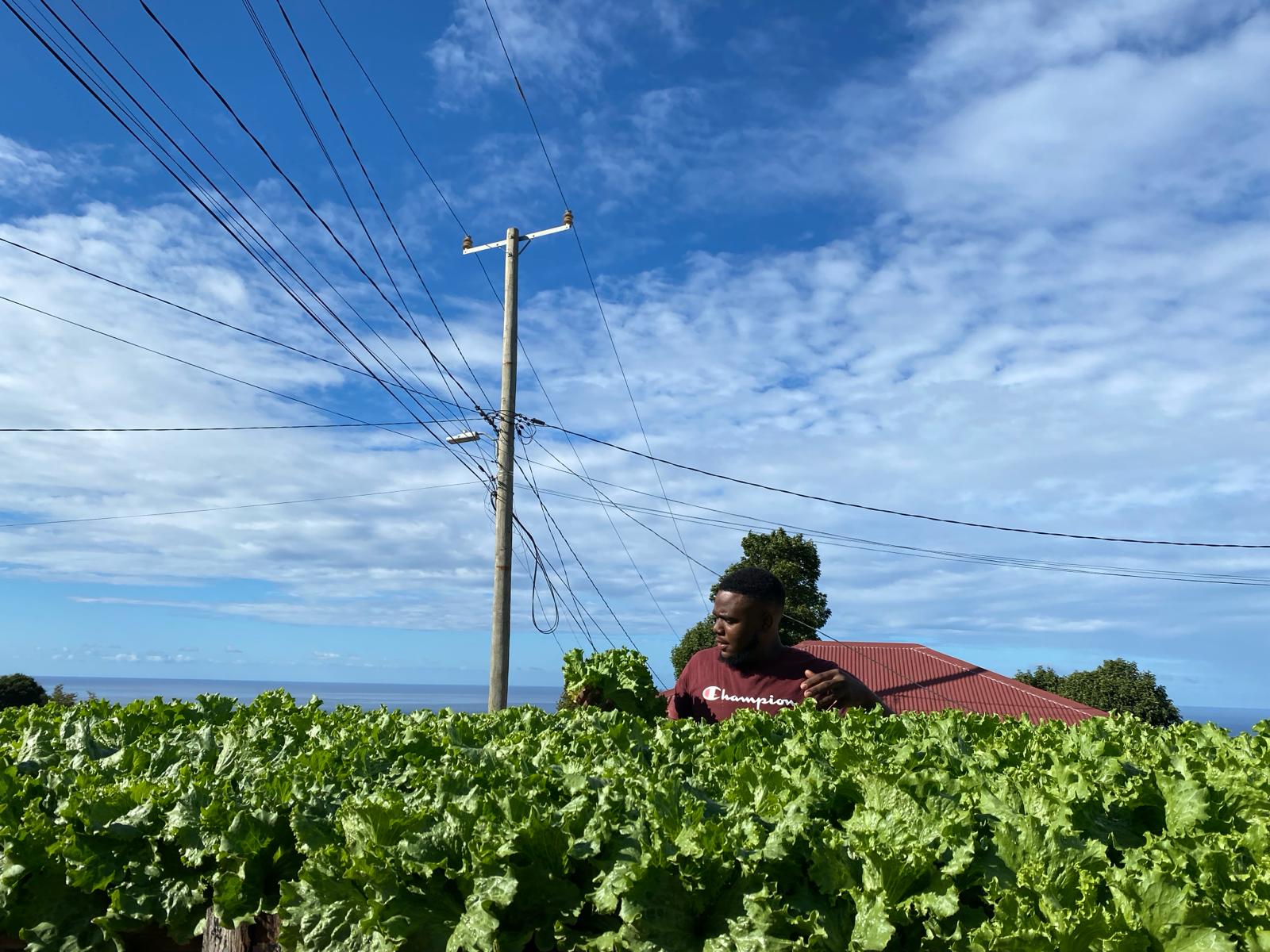After the devastation Hurricane Maria left behind on Dominica and the ensuing food shortages, officials and residents pledged not only to restore the island’s agricultural system but also to make it more self-reliant.
But since 2017 food imports have soared.
The Eastern Caribbean Central Bank (ECCB) in its data report showed that over the last six years since the storm, Dominica has imported more food in each of those years.
In 2017, the country imported US$40 million worth of food, since then the number has ballooned to US$56 million – with meat, cereals, fruits and vegetables accounting for a large percentage of the bill.
Hurricane Maria damaged or destroyed much of the agricultural infrastructure, including buildings, animal husbandry facilities, agricultural roads and croplands.
In a preliminary report by the government of Dominica, the agriculture sector reported US$ 179.6M (EC$ 485M) in loss and damage, impacting all aspects of agricultural production from crops, infrastructure, equipment to croplands.
“Livestock damage includes 45 percent of cattle, 65 percent pigs and over 90 percent chickens with an estimated value of EC$ 8.68M (US$3.21M),” the government reported.
Crop losses were similarly high, particularly with respect to basic foodstuff such as root crops, vegetables, banana and plantain where crop destruction ranged from 80 to 100 percent. Tree crops, mango, avocado, citrus, bay and others. The total estimated damage and losses to crops is estimated at EC$ 350.6M (US$ 129.9M).
In the aftermath of the storm, the territory’s leaders embarked on a journey of recovery and resilience, launching a plan to become a sustainable island state with resilient infrastructure, better food production capabilities and an overall developmental scheme.
With its 73,300 population, Dominica is often described as the ‘Nature Isle of the Caribbean’ with 751 km² of lush green fertile lands.
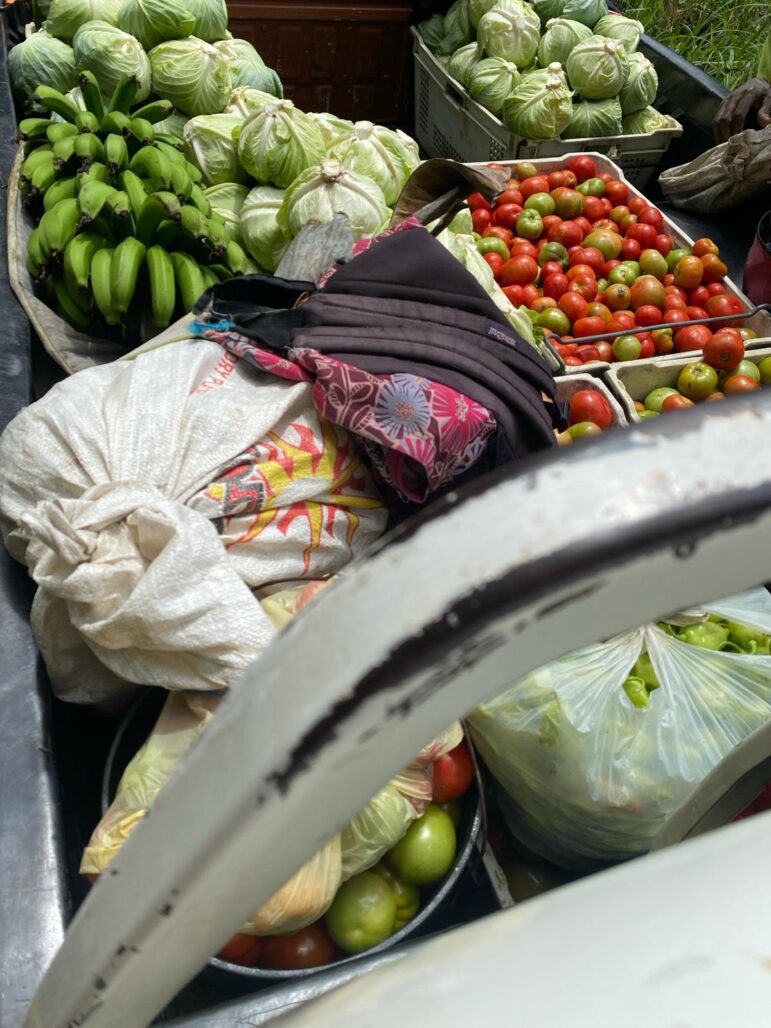
Private Sector and its Role in Food Security
Kerwin Jno Baptiste, Executive Director of the Dominica Association of Industry and Commerce conceded that the private sector is not yet at the level of resilience. When the hurricanes hit in 2017, the private sector was critically impacted which sent food prices soaring and complaints of price gouging.

He noted that some entities have built resilience while working with various insurance companies, but Baptiste set a timeline of the end of the year for businesses to lift their standards and more resiliency.
“At this point, can I say that we are ready to withstand another disaster? As a country, I cannot say yes. There’re so many things that we need to take into consideration…No one is ever fully ready. Are we taking the steps that we need to? We are taking a few steps. Are we taking as fast as possible? I think that is the real question.
The chamber is currently working on a plan to assist the business sector not just with business continuity plans but other areas where there are deficiencies.
Infrastructure Reconstruction
Sector recovery will depend heavily on the reconstruction of infrastructure in order to rehabilitate the sector and reestablish the farm to market transportation network. The ability of small farmers to recover will depend heavily on their access to funding resources as they rehabilitate their properties and re-establish their crop cycles. The estimated damage to infrastructure as a result of the storm is EC$ 95.6M (US$ 35.43M).
The territory has made significant strides in rebuilding as part of its resilience push, but challenges remain in prioritizing food security and increased food production.
The major challenge facing the territory is the high dependency on imported foods which was evident when the hurricane hit. Such a dependency has given rise to price gouging, health complications and unethical acts against consumers in their times of need.
According to data by the Government of Dominica, since Hurricane Maria, the agriculture sector has consistently provided approximately US$3 million to the territory’s gross domestic product. In the year prior to Hurricane Maria, the sector contributed 16.27 percent to GDP, and it fell to 13 percent in 2017, and 11 percent the subsequent two years.
Despite the efforts of some within the agriculture sector to increase production, they also face the problem of pests and diseases, climate change, farming techniques, and the problem of getting more young people involved in the sector. The region itself remains a zone opened to the growing threats of stronger hurricanes, rising sea temperatures, droughts and the unpredictable systematic weather patterns.
For much of 2023, the region saw extremely hot days and nights, resulting in the decreased rainfalls which has prompted farmers to find alternative ways to consistently produce.
Concerning experts are the challenges with the international supply chain, the ongoing war in Ukraine, and the Houthi attacks in the Middle East, and the rising inflation across the globe.
To combat what is being described as a US$3.6bn problem across the region, Dominica has signed on to the CARICOM ‘25 by 2025’ Initiative, which seeks to push food sustainability through increased production of specific crops and livestock locally. Under that initiative, Caribbean territories are seeking Government’s effort to assist farmers.
The government through the Ministry of Agriculture sought to reignite the agriculture and fisheries sectors with the injection of US$65 million (EC$175.67 million) to assist farmers in their recovery efforts. The funds fell under the Emergency Agricultural Livelihoods and Climate Resilience Project.
Petra Grell Shillingford, Communication Specialist in the Ministry of Agriculture, noted that the project achieved its aim of providing farmers and fishers with the necessary resources to return to pre-Hurricane Maria stage, including assistance with boats, engines, green houses and livestock.
“So, post Hurricane Maria the government of Dominica saw it fit to really assist farmers and fishers and to really get back on their feet. So, it was no matter of taking you from A to B at that time, it was really getting you back to A, where you were. So, you had a boat, you had an engine, you had a greenhouse structure, you had your livestock etc,” she told CIJN.
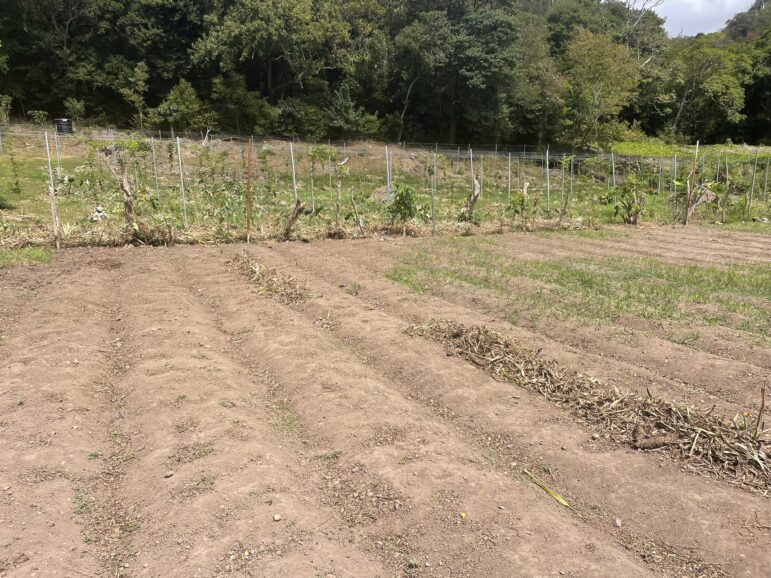
NGOs Focusing on Sustainability and Food Security
Since the passage of Hurricane Maria, a number of non-government organizations have stepped in to assist the territory to bolster the agriculture sector. One such is the Food and Agriculture Organization of the United Nations.

Dr Adis King, Coordinator for UN Agencies and International NGOs in Dominica, told CIJN that the FAO’s presence within the territory has been very noticeable, as it is currently working on food security, in collaboration with the World Food Programme.
To accomplish the task of becoming food secure, the agency has targeted more youth involvement within the sector – an area lacking for many years. That challenge is compounded by the changing climate which has since prompted King and her team to find new practices for agriculture in order to adapt.
She pointed to the proper use of fertilizers and the utilization of green houses for the betterment of the island.
“Because, as we know, agriculture was that mainstay for our economy in the past. And I think it can really be again. So, we really need to work with our youth to get them interested in agriculture again, but not just agriculture in the traditional way, but new forms of agriculture.”
SAC’s Projects
Dr. Nadia Pacquette Anselm, Country Coordinator for Dominica and St. Lucia, Sustainable Agriculture in the Caribbean SAC Project World University Service of Canada is spearheading a four-year project for the enhancement of the agriculture sector across the island with the support of the Dominican government.
Since the start of that project during the early stages of the COVID pandemic, significant implementation was made in 2023 which will, in part, see them build a closer relationship with producer groups, organizations and agencies. As part of its mandate, the NGO will seek ways of improving the livelihood of farmers through economic empowerment for increased productivity of women, youth and marginalised men within agricultural market systems.
“Last year was a very important year for us. We made a lot of significant progress in terms of project implementation and we are looking ahead and we are looking forward to year four as we have forged great relationships with producer groups, organisations and agencies, other like projects and of course the Ministry of Agriculture Fisheries Laundering Economy. SAC of course looks at improving the livelihoods through economic empowerment and of course increased productivity of women, youth and marginalised men within agricultural market systems.”
Water Projects and Rehabilitation
Like with agriculture, the water sector also felt the brunt of Hurricane Maria, and part of the sustainability push by the government saw them returning to the drawing board to determine how to rebuild and enhance water supply to communities.
It was against that backdrop that they sought and obtained funding from the United Kingdom Government. Under that project water officials engaged consultants with assistance of the Caribbean Development Bank, the UK, and the Foreign Commonwealth Development Office.
Despite selecting a consultant out of Germany following the hurricane, the consultations were stalled due to the COVID pandemic.
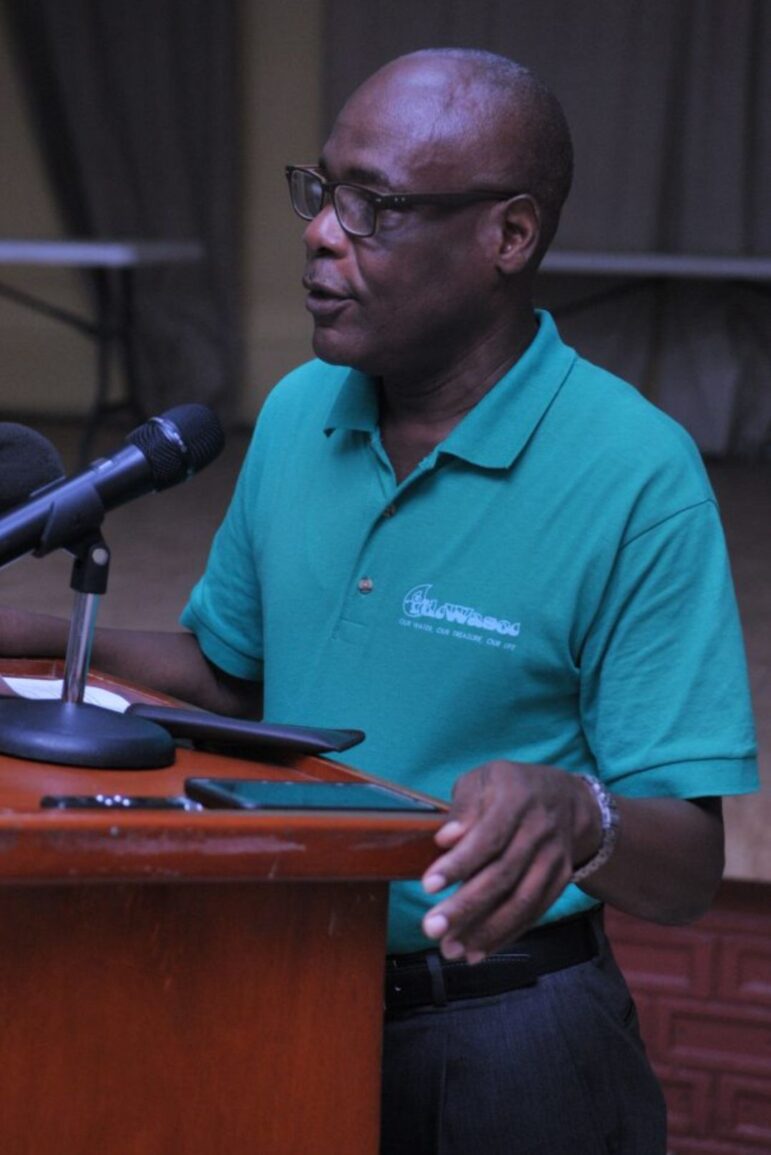
It looks at strengthening capacity across all sectors as it relates to water management in Dominica. But importantly, it also prioritizes the water systems that are very, very vulnerable, utilizing what is referred to as the, I believe it’s the ‘World Bank infrastructure prioritization framework’, which looked at various variables like the economic challenges, the development that is taking place, the population size in various communities and so forth, and prioritize six water systems for intervention using those funds.
It did take some time. COVID-19 came and the consultants were stuck in Germany for some time and so on,” General Manager of the Dominica Water and Sewage Company DOWASCO Bernard Ettinoffe explained.
With the island facing drought conditions, it is critical for the project to come on stream but the challenge facing the government is the bids received for work to be undertaken. According to Ettinoffe, they have $70 Million available for rehabilitation work on the project but they have received bids in excess of the that amount as the government is forced to balance competing priority projects,
“The consultants did the estimates, the design works, the bidding documents. And so, we went out to bid a couple years ago. And the bids came back at $195 million. The total we had there was $70 million.
Because of the shortfall of funding, the general manager noted that they were forced to scale down some of the interventions they wanted to do and reprioritize.
Cognizant of the challenges facing the region because of the small size of territories, the Caribbean Disaster Emergency Management Agency (CDEMA), has urged member states to ensure that they are adequately prepared for the hurricane season. Over the years, the regional agency has held workshops and capacity building training for various member states, including Dominica to ensure that they are prepared for the season.
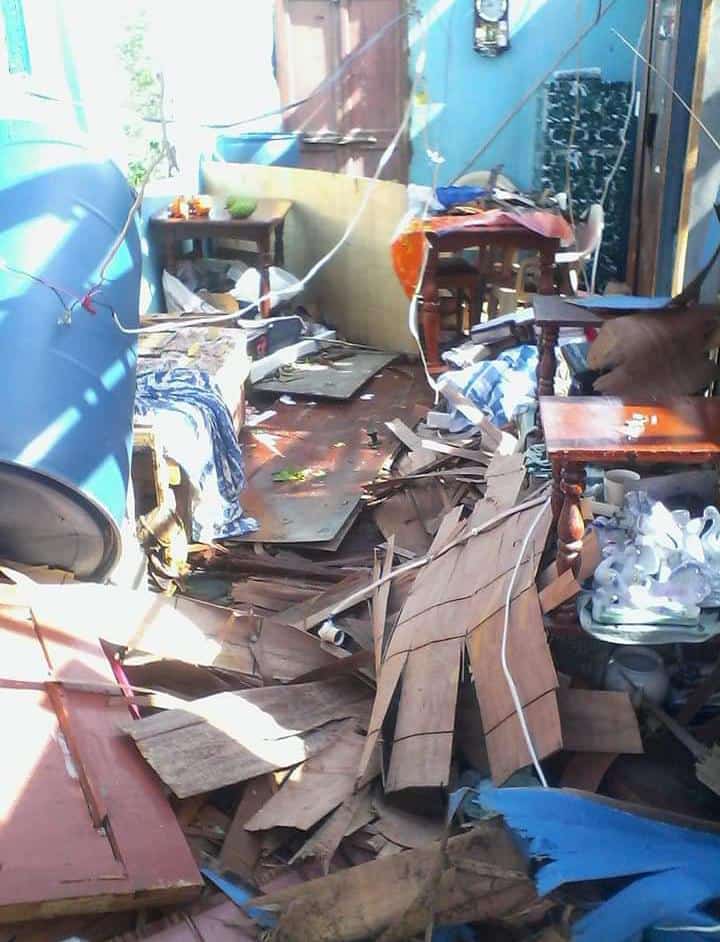
CIJN reached out to CDEMA for a comment on Dominica and their preparations, lessons learnt and recommendations going forward, but up to publication we were unable to receive a feedback.
This story was supported via a Fellowship from Media Institute of the Caribbean (MIC) and Internews with funding provided by Clara Lionel Foundation (CLF).
